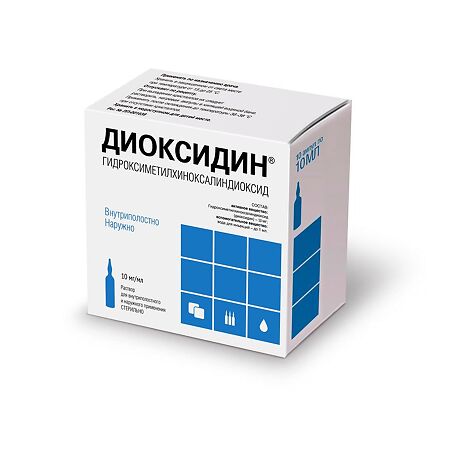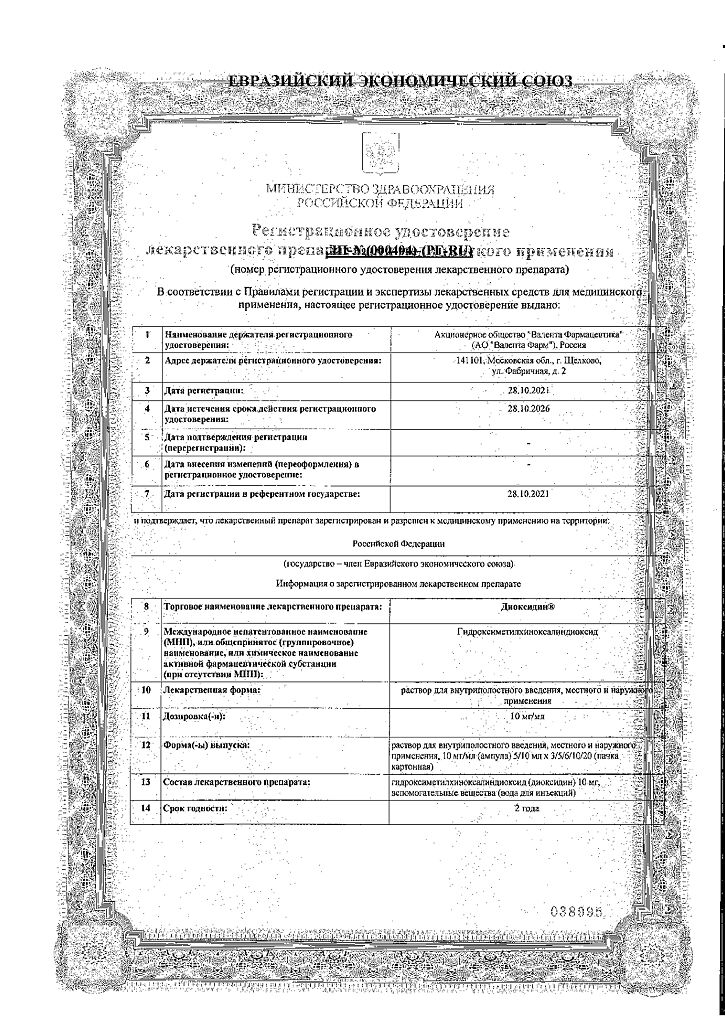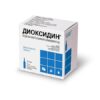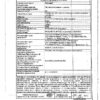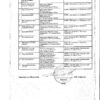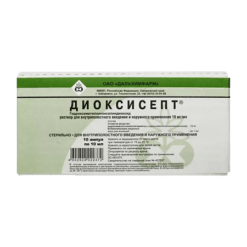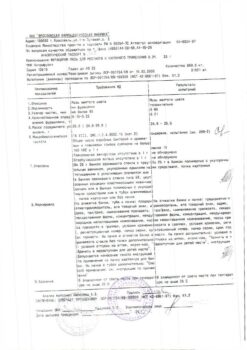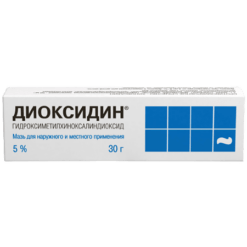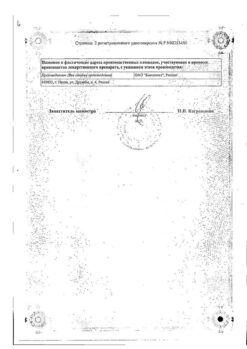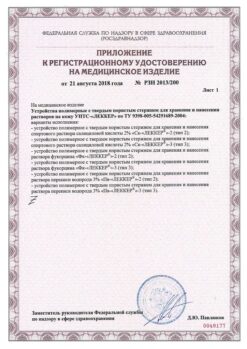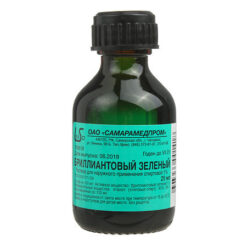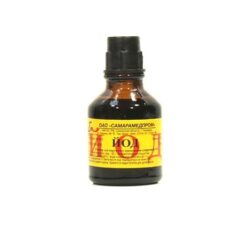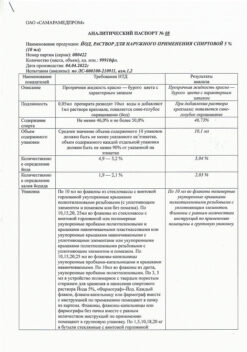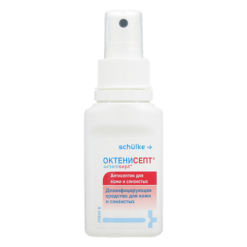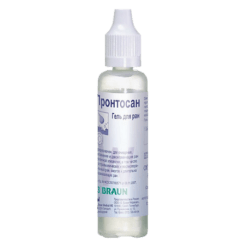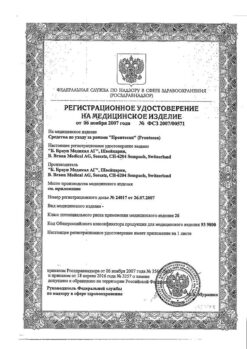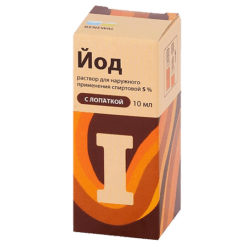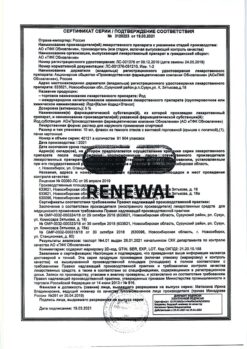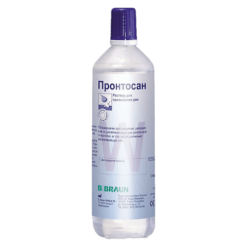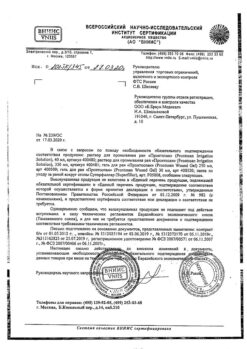No products in the cart.
Dioxidin, 10 mg/ml 10 pcs
€26.97 €22.48
Description
A broad spectrum antibacterial drug from the group of quinoxaline derivatives, has chemotherapeutic activity against infections caused by Proteus vulgaris, Pseudomonas aeruginosa, Klebsiella pneumoniae, Escherichia coli, Shigella dysenteria, Shigella flexneri, Shigella boydii, Shigella sonnei, Salmonella spp, Staphylococcus spp., Streptococcus spp., pathogenic anaerobes (Clostridium perfringens), acts on bacterial strains resistant to other chemopreparations, including antibiotics.
The development of drug resistance of bacteria is possible. Treatment of burn and purulent-necrotic wounds promotes faster clearing of the wound surface, stimulates reparative regeneration and marginal epithelization and favourably influences the course of the wound process.
In local application it is partially absorbed from the wound or burn surface and excreted by the kidneys.
In local application it is partially absorbed from the wound or burn surface and excreted by the kidneys.
Indications
Indications
Purulent bacterial infections caused by sensitive microflora when other chemotherapeutic agents are ineffective or poorly tolerated.
Intracavitary administration – purulent processes in the chest and abdominal cavity, with purulent pleurisy, pleural empyema, lung abscesses, peritonitis, cystitis, wounds with deep purulent cavities (soft tissue abscesses, pelvic cellulitis, postoperative wounds of the urinary and biliary tract, purulent mastitis, etc.), for the prevention of infectious complications after bladder catheterization. Local use – treatment of acute purulent otitis media with perforation and exacerbation of chronic purulent otitis media, treatment of acute tonsillopharyngitis, treatment of exacerbation of chronic tonsillitis (compensated form).
External use – superficial and deep wounds of various locations, long-term non-healing wounds and trophic ulcers, soft tissue phlegmon, infected burns, purulent wounds with osteomyelitis.
Pharmacological effect
Pharmacological effect
A broad-spectrum antibacterial drug from the group of quinoxaline derivatives, has chemotherapeutic activity against infections caused by Proteus vulgaris, Pseudomonas aeruginosa, Klebsiella pneumoniae, Escherichia coli, Shigella dysenteria, Shigella flexneri, Shigella boydii, Shigella sonnei, Salmonella spp., Staphylococcus spp., Streptococcus spp., pathogenic anaerobes (Clostridium perfringens), acts on strains of bacteria that are resistant to other chemotherapy drugs, including antibiotics.
The development of drug resistance in bacteria is possible. Treatment of burn and purulent-necrotic wounds promotes faster cleansing of the wound surface, stimulates reparative regeneration and marginal epithelization, and has a beneficial effect on the course of the wound process.
When applied topically, it is partially absorbed from the wound or burn surface and excreted by the kidneys.
Special instructions
Special instructions
Dioxidin is prescribed only to adults. Before starting the course of treatment, a drug tolerance test is carried out, for which 10 ml of a 1% solution is injected into the cavity. If there are no side effects within 3-6 hours (dizziness, chills, increased body temperature), a course of treatment begins.
Dioxidin is prescribed only for severe forms of infectious diseases or when other antibacterial drugs are ineffective, including cephalosporins of the II-IV generations, fluoroquinolones, carbapenems. In case of chronic renal failure, the dose is reduced. If pigmented spots appear, increase the duration of dose administration to 1.5-2 hours, reduce the dose, prescribe antihistamines or discontinue Dioxidin.
If crystals fall out during storage (at temperatures below 15°C), they are dissolved by heating the ampoules in a boiling water bath while shaking until the crystals are completely dissolved (clear solution). If, when cooled to 36-38°C, the crystals do not fall out again, the drug is suitable for use.
Active ingredient
Active ingredient
Hydroxymethylquinoxaline dioxide
Composition
Composition
Active ingredient: hydroxymethylquinoxaline dioxide (dioxidine) – 10 mg
excipient: water for injection – up to 1 ml
Pregnancy
Pregnancy
During pregnancy and breastfeeding, the use of Dioxidin is contraindicated.
Contraindications
Contraindications
Individual intolerance to the drug, adrenal insufficiency (including a history), pregnancy, lactation, children (up to 18 years).
Side Effects
Side Effects
With intravenous administration, headaches, chills, increased body temperature, dyspeptic disorders (nausea, vomiting, diarrhea), muscle cramps, allergic reactions (rash, urticaria), photosensitizing effect (the appearance of pigmented spots on the body when exposed to sunlight) are possible. When used externally – itching, periwound dermatitis.
Overdose
Overdose
In case of an overdose of Dioxidin, acute adrenal insufficiency may develop, which requires immediate discontinuation of the drug and appropriate hormone replacement therapy.
Storage conditions
Storage conditions
In a place protected from light at a temperature of 15 to 25 ° C. Keep out of reach of children
Shelf life
Shelf life
2 years
Manufacturer
Manufacturer
Novosibkhimpharm, Russia
Additional information
| Shelf life | 2 years |
|---|---|
| Conditions of storage | Store in a light-protected place at 15 to 25 °C. Keep out of reach of children |
| Manufacturer | Novosibkhimpharm, Russia |
| Medication form | solution |
| Brand | Novosibkhimpharm |
Other forms…
Related products
Buy Dioxidin, 10 mg/ml 10 pcs with delivery to USA, UK, Europe and over 120 other countries.

